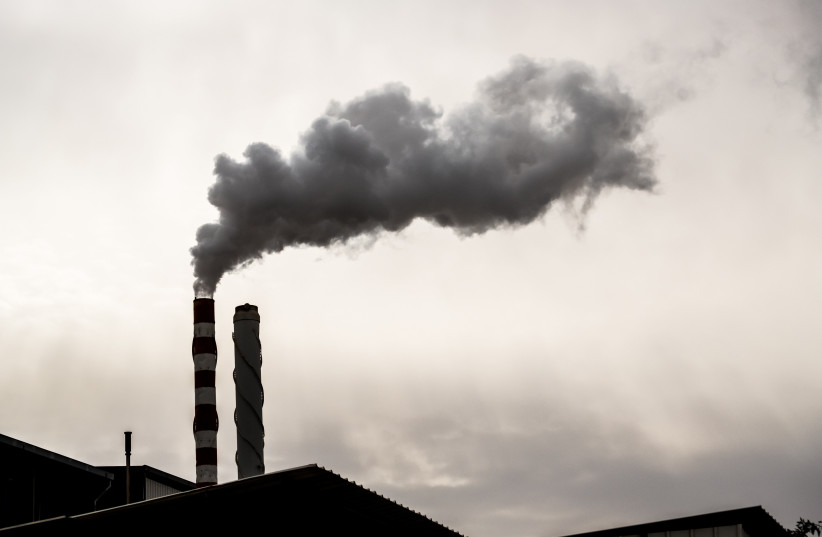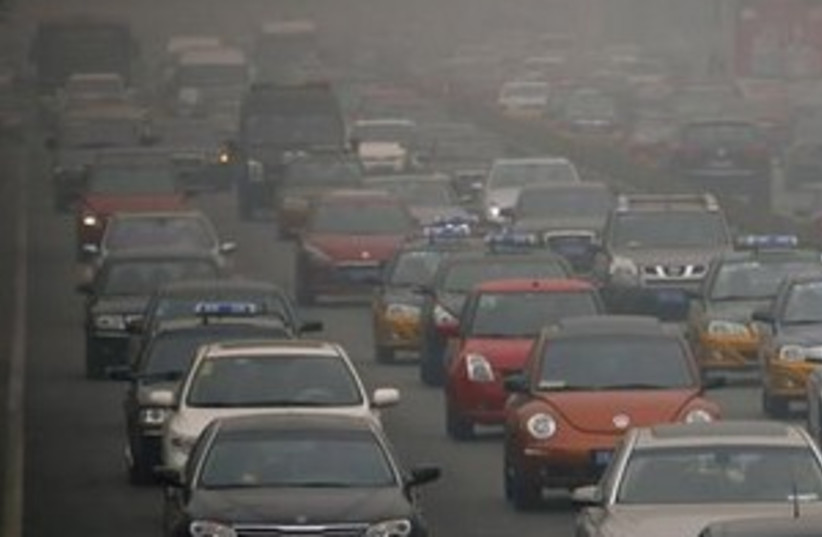The first study of its kind conducted by the Ministry of Environmental Protection examines the location of emissions into the air according to the socio-economic ranking of the local authority.
Published: AUGUST 22, 2022

Just as Israelis at lower socioeconomic rungs of the ladder have less access to advanced and accessible healthcare, municipalities and local and regional councils with a lower economic ranking generally have more air pollution than those that are better off economically. But the middle class in cities also suffers because of their proximity to polluting industries.
The first study of its kind conducted by the Environmental Protection Ministry examines the location of emissions into the air according to the socioeconomic ranking of the local authority. It helps identify areas of prosperity and areas of distress and may also help improve the policy of the central government toward the local authorities. The research was based on data from 2018, and the ministry will soon publish the 2021 data.
The data are important for the ministry and the entire government to act to reduce and reduce air pollution from industry, electricity production and burning waste that damage air quality and harmful residentsEnvironmental Protection Minister Tamar Zandberg
The highest average air-pollution emissions in all types of authorities are in regional councils with socioeconomic ratings of six to seven, and the main emission is from factories. In the cities, the highest average emissions have socioeconomic ratings of four to six, with most of the pollution from factories as well. However, since there is great variation in the characteristics of the types of authorities according to size and population, the findings must be examined accordingly.
Local councils with ratings of one to five were found to suffer mainly from illegal burning of municipal waste. The lower a local council’s rating, the higher its emissions into the air. A low emission level was recorded in some local councils because they do not have industrial and employment areas, but a significant part of the emissions that do occur in these places is from the illegal burning of urban and agricultural waste and of wood for home heating. In general, the lower the socioeconomic ranking of local councils, the higher was the emission level.
Car pollution (credit: REUTERS)
“The connection between environmental hazards and socioeconomic indicators has been known for years and has preoccupied the world,” Environmental Protection Minister Tamar Zandberg said. “In Israel, it is particularly important due to the deep social gaps and the diversity of the population. The study points to the locations and indicators related to air pollution from industry – high emissions in cities ranked fourth – and also points to the high vulnerability of the most disadvantaged populations (rating one to three) to pollution from burning waste. The data are important for the ministry and the entire government to act to reduce and reduce air pollution from industry, electricity production and burning waste that damage air quality and harm residents.”
Research and classification methods
Pollutants released into the air have harmful effects on human health and the environment, causing financial losses that are not taken into account when they are emitted. Since these costs are not paid by those factors that pollute but constitute a financial burden on the economy, they are called “external costs,” the ministry said.
The study, conducted with the assistance of Ecotraders, classified the locations according to 10 clusters – No. 1 indicated the lowest socioeconomic level, while No. 10 indicated the highest.
EXAMINING ALL types of authorities together (municipalities, local councils and regional councils), it appears that the amount of air pollution is the highest in municipalities with a socioeconomic rating of six to seven, where the middle class lives.
In the municipalities, most of the emissions are in ratings four to seven, with an emphasis on emissions from industry and power generation in rating four (Ramle, Kiryat Gat, Dimona, Migdal Ha’emek, Arad, Acre and more). In regional councils, the majority of emissions are in ratings six and seven, with an emphasis on emissions from industry and electricity production, animal husbandry and burning of plant waste.
About 780,000 Israelis live in areas governed by regional councils. Fully 58% of them are in municipalities ranked six and seven, where the level of pollution is the highest.
Pollution levels in wealthy areas
The level of emissions in regional councils with a socioeconomic ranking of nine is relatively low. A possible explanation is that the value of real estate in these authorities is high, so the property market pushes polluting activities away from these areas and encourages nonpolluting uses. Also, the population living in these councils has economic power that allows them to choose to live in a place relatively distant from emission sources and to prevent the establishment of new emission sources.
About 6.6 million Israelis live in municipalities – half of them with a socioeconomic ranking four to seven, where the level of emissions is high. In the cities, a significant part of the emissions in these authorities is from industry and electricity production.
A possible explanation for the relatively high level of emissions in the intermediate ranking is similar to the phenomenon in the regional councils – this class determines its place of residence according to the places of employment, but it cannot financially afford to move its residence away from polluting areas.
In particular, the emission level is relatively high in cities with a socioeconomic rating of four. There are eight cities in this group: Ramle, Dimona, Acre, Arad, Kiryat Gat, Migdal Ha’emek, Tiberias and Tira. These cities have old employment centers based on industry that remove these cities from low socioeconomic rankings but are sources of emissions into the air.
Although the emission level in local councils is relatively low, it is evident that the lower the socioeconomic rating, the higher the emission level (ratings one to four). The main cause of the high emission in the low ratings is the illegal burning of municipal waste. Most of the local councils in ratings one to four have a Muslim, Christian or Druze population.
The ministry said it has begun its Environmental Progression program to improve the environment in Arab settlements as part of the government’s effort to improve the state of the infrastructure and the quality of life in these areas. This program focuses on waste treatment in Arab locations, especially by significantly reducing the illegal burning of waste that harms public health.
https://www.jpost.com/environment-and-climate-change/article-715278

